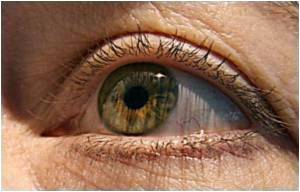Scientists have found that 3D motion signals separate into two 'pathways' in the brain at an early stage of the image transmission between the eyes and the brain.

Scientists at the Universities of York, St Andrews, and Bradford have now shown that there are two ways the brain can compute 3D signals, not just one as previously thought.
Dr Alex Wade from the University of York's Department of Psychology, said: "We know that we have two signals from our visual system that helps the brain compute 3D motion - one is a fast signal and one is a slow signal.
"This helps us in a number of ways, with our hand-eye coordination for example, or so that we don't fall over navigating around objects. What we didn't know was what the brain did with these signals to allow us to understand what is going on in front of our eyes and react appropriately.
"Using brain imaging technology we were able to see that two 3D motion signals are separated out into two distinct pathways in the brain, allowing information to be extracted simultaneously and indicating to the visual system that it is encountering a 3D moving object."
The research team had previously shown that people with lazy eye syndrome might still be able to see 'fast' 3D motion signals, despite them having very poor 3D vision in general. Now that scientists understand how this pathway works, there is the potential to build tests to measure and monitor therapies aimed at curing the condition.
Advertisement
"The visual pathways for colour have been thought to be independent of signals about motion and depth, but the research suggests that there could be a connection in the brain between these three visual properties."
Advertisement
The research is published in the journal Proceedings of the National Academy of Sciences (PNAS).
Source-Eurekalert









